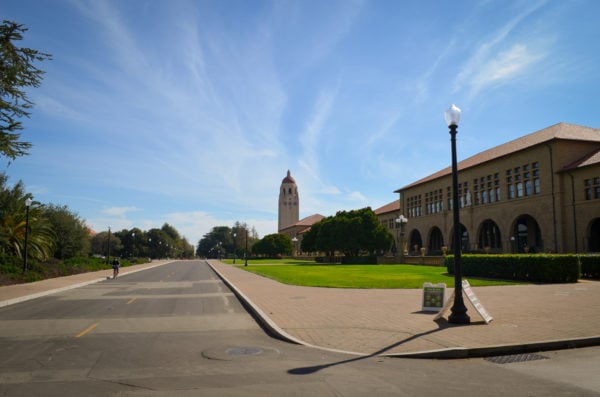Warning! Incoming unpopular opinion: I actually like the Ways graduation requirements.
The Ways of Thinking, Ways of Doing, or simply Ways requirement, is Stanford’s take on college general education requirements. To graduate, students must take 11 courses in 8 Ways paths; at least two courses must be taken in Aesthetic and Interpretive Inquiry (AII), Scientific Method and Analysis (SMA), and Social Inquiry (SI), and at least one course in Applied Quantitative Reasoning (AQR), Creative Expression (CE), Exploring Difference and Power (EDP), Ethical Reasoning (ER), and Formal Reasoning (FR).
Stanford characterizes Ways as a “unique general education breadth requirement” and “unlike the disciplinary breadth requirements of many traditional institutions.” The Ways of Thinking and Ways of Doing model teaches students to view various issues in new and broad capacities to enhance their learning experience.
The Ways requirement receives a fair amount of criticism, but I think it is, at least, an acceptable requirement to appreciate. As students, we must fulfill the Ways requirements to graduate, so I have compiled a list of positive contributions the Ways requirement has on our college education to reframe how we think of it.
For starters, general education requirements are not unique to Stanford. Most universities have general education requirements, so there is really no way around them. However, with Ways, Stanford allows for much room for selection. These requirements can be fulfilled in various ways, with many classes to choose from that focus on different areas.
For example, Applied Quantitative Reasoning requires students to use quantitative tools such as data and models to apply methods of reasoning. A student could take BIOE 42: “Physical Biology” for a more direct approach to fulfilling this requirement. However, a student could also take AA 131: “Space Flight,” where rather than doing direct biology, a student can fulfill the AQR learning goals by learning how to build a spacecraft. Or a student could take COLLEGE 105: “The Politics of Development,” where students still learn how to use quantitative tools; however, they are applied with a humanities lens to analyze political foundations.
Some classes a student takes for Ways could also fulfill their major requirements. Students can use ExploreCourses to find courses that meet specific Ways requirements and scroll to their respective majors. They can see if classes are listed under their major count for that Ways requirements. A class like BIOE 42 can fulfill the requirement of the AQR Ways while also fulfilling a major requirement for a student majoring in Bioengineering. COMM 104W: “Reporting, Writing, and Understanding the News” fulfills the Creative Expression Ways requirement but can also count towards the Communication major.
The flexibility of the Ways requirements can also allow students to learn something new in different ways that may be more comfortable for them. For example, a student can fulfill the Scientific Method and Analysis requirement to understand natural sciences by taking PSYC 135: “Dement’s Sleep and Dreams” to engage in neuroscience rather than something that might be less interesting to them, like BIO 86: “Cell Biology.” The student can still learn science, but in a way that may be more appealing to the specific student.
The Ways requirements also allow students to take classes outside of their major, allowing for a break in their schedule from pure major classes. My Undergraduate Advising Director, Gabriel Wolfenstein (shoutout to Gabriel), recommends spreading Ways classes out so you can have a break from your major throughout many quarters of your Stanford undergraduate career.
Many of these Ways classes can be a pop of fun in your schedule like RELIGST 6N: “Religion in Anime and Manga” to learn about the presentation of religions in Japan, AMSTUD 115S: “Spies, Lies, and Algorithms: The History and Future of American Intelligence” to learn about spies and war, and BIO 9N: “Chilis: Biology, History, Travels, Cuisine” to learn about chili peppers.
In taking some of these classes outside of their major, students are able to explore different areas that might provoke a new interest or a possible new path. Some classes may urge students to change their field of study to something else they find more appealing or take on a minor to pursue a smaller study.
And finally, as cheesy as it may sound, learning about many subjects can make you a well-rounded individual. You could graduate from Stanford as a Classics major, but if you were ever in a heated discussion with colleagues about space exploration, you might have an unusually excellent knowledge of aerodynamic performance because you took AA 100: “Introduction to Aeronautics and Astronautics” to fulfill the SMA or AQR requirement. Or, if you find yourself on a game show post-graduation with a million-dollar question revolving around the history of jazz, you could be a million dollars richer because you took AMSTUD 18A: “Jazz History: Ragtime to Bebop, 1900-1940,” to fulfill the AII requirement.
But Ways is not the only graduation requirement. Other controversial requirements include The Program in Writing and Rhetoric (PWR) and the Civic, Liberal, and Global Education (COLLEGE) program – Those are a conversation of their own!
